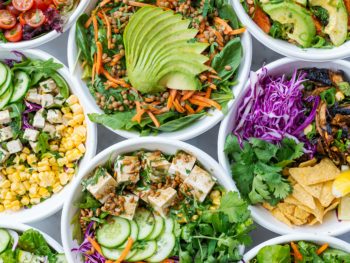Below is my latest blog post for Huffington Post on the new food labels: FDA proposes larger–more realistic–serving sizes for food labels.
You can also read it HERE.
The Food and Drug Administration (FDA) just released its proposal to update the Nutrition Facts label found on packaged foods and beverages. If approved, the new food label will update serving sizes. The label has not changed much in 20 years.
FDA is proposing to change the standard serving sizes to reflect what people actually eat. The FDA defines the current serving sizes as amounts of foods commonly consumed based on dietary intake surveys conducted in the 1970s and 1980s.
We eat larger portions than we did 20 years ago, so current serving sizes are smaller than what people actually eat. As I’ve written in my book The Portion Teller Plan andresearch articles, these serving sizes may be confusing to people trying to follow dietary advice.
The new serving size will, most likely, increase for most foods. By law, the standard serving size on a food label is supposed to reflect what people actually eat, not what they should eat. Therefore, the new serving size standards are not meant to be interpreted as recommendations for how much to eat.
With larger serving sizes on food labels, that would mean that a pint of ice cream that currently has four servings per pint (each serving is ½ cup), will have two servings for the new proposed label (each serving size will increase to 1 cup). The calories listed will, therefore, also increase. If a 1/2 cup serving of ice cream contains 200 calories, with the new 1 cup serving size, the label will now display 400 calories.
For the new label, the number of servings per package and the calories per serving will be more prominently displayed.
FDA is also proposing a makeover for single-serve foods and drinks. For example, a 20-ounce bottle of soda, which is typically consumed in one sitting by one person, would be labeled as one serving instead of 2.5 servings. After all, are you going to share your soda with 1.5 other people? Probably not. Other foods marketed for one person that often contain multiple servings per package include muffins, cookies, and small bags of chips.
What can we make of this?
For the good news, as I discussed on CBS Morning News, the serving sizes will be more realistic and reflect what people really eat. Many people today just glance at the calories and think that whatever amount they eat is a serving. For the ice cream example, a consumer reading food labels will now see 400 calories displayed instead of 200 calories.
This may mean that you would think twice before scarfing down the entire pint.
I also think it is excellent that FDA is finally addressing packaged foods and drinks marketed for one person but that have multiple servings listed on the package label. This may clear up some confusion regarding the calorie content of what we are actually eating.
A note of caution: FDA is not telling us to eat more. At least, the agency is not advising us to eat a bigger portion of ice cream. Rather, the agency is informing us as to the calorie and nutrient content in a standard serving size which is more in line with what we really do eat.
It would be useful if FDA follow up with nutrition education materials to further educate the public on the relationship between portion sizes, calories, and obesity.
FDA is accepting comments for 90 days.
We would love to hear your thoughts.



